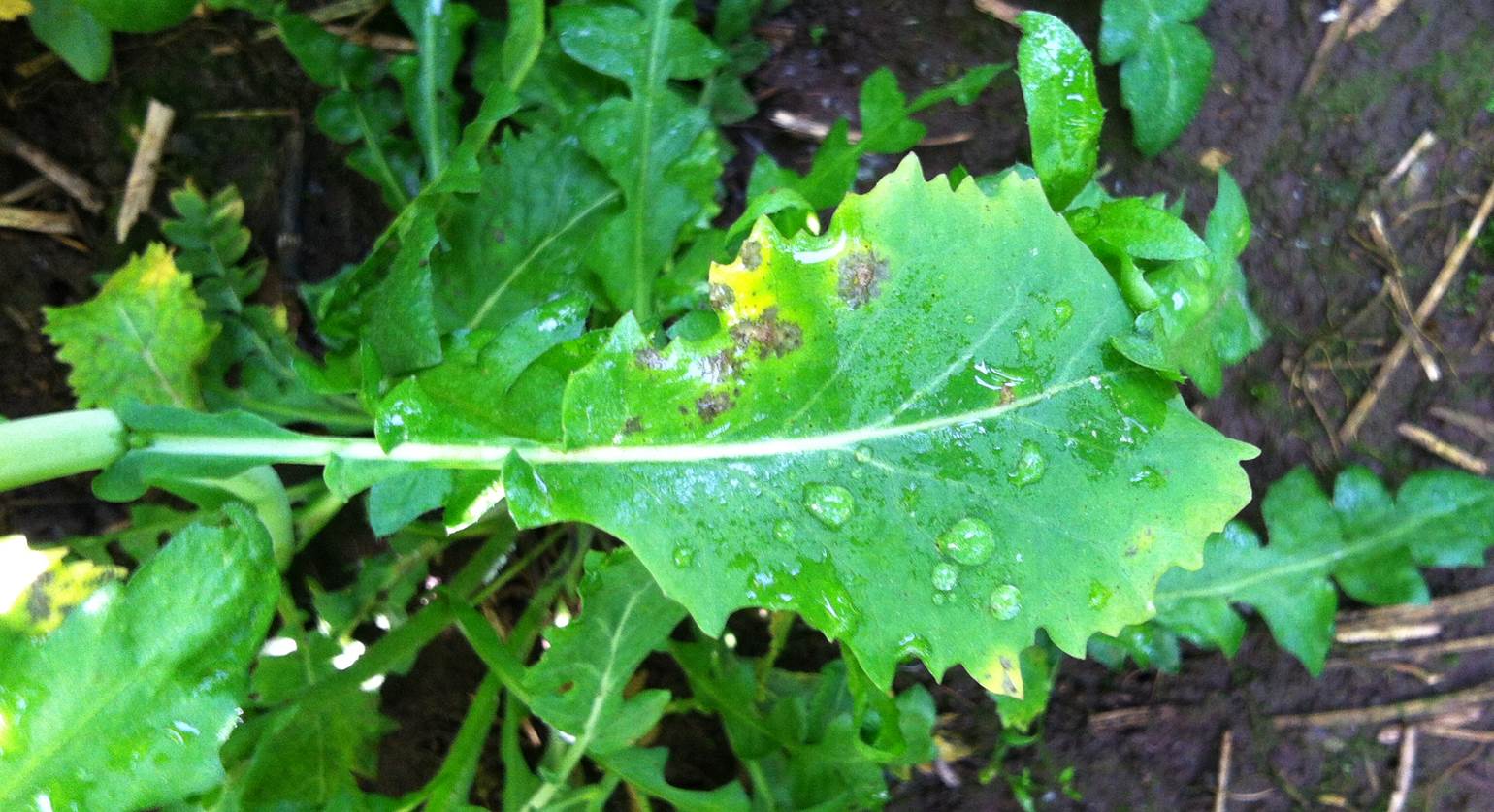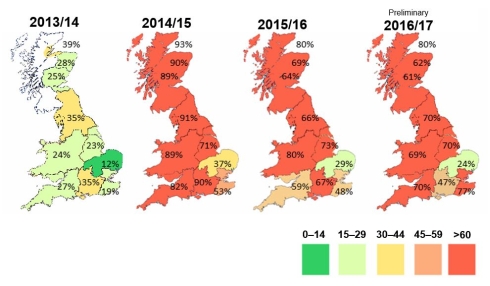
The autumn light leaf spot (LLS) forecast shows that the risk of LLS development in winter oilseed rape is high for the third year running.
Hosted by Rothamsted Research and supported by AHDB Cereals & Oilseeds and Bayer CropScience, the regional forecasts show the proportion of crops predicted to have greater than 25 per cent of plants affected by LLS (based on disease incidence at 79 fields in the previous season and weather data).
High levels of disease were generally observed on winter oilseed rape stem and pods before harvest and this has resulted in a high inoculum carry-over potential into this season’s crops for most GB regions.

LLS is a threat to oilseed rape crops across the UK with its ability to stunt plants and cause premature pod ripening, halving yields where disease pressure is severe.
Recent epidemics have caught growers out, not least because many popular varieties have relatively poor natural resistance to the pathogen coupled with the fact that control is a challenge.
Some regions are at a higher risk this year (South West and South East of England), whereas some are at a lower risk (South of England). East Anglia, which is generally warmer and drier than other regions, is the region forecast to be at the lowest risk of LLS.
Dr Neal Evans, plant pathologist at Weather INnovations (WIN), who puts together the forecast, said: “As always, the best way to know what is going on in a particular field is to take plant samples and put them in polythene bags at 10–15°C for 4–5 days to help bring out symptoms.”
